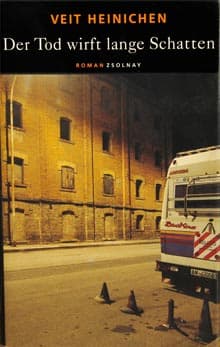
Original title
Der Tod wirft lange Schatten
Date of publication
2005 Paul Zsolnay Verlag, Wien
Versions
Italian (Le lunghe ombre della morte, 2006 Edizioni e/o), Spanish (La larga sombra de la muerte, 2007 Siruela), French (À l’ombre de la mort, 2009 Seuil), Dutch (De lange schaduw van de dood, 2009 De Geus)
On an unusual hot May two events shock Trieste and risk to ruin Commissario Laurenti’s summer. On one hand the discovery of a naked dead body in a solitary valley of the Carso, on the other hand the recovery of a large arsenal of weapons, munitions and documents dated WWII belonging to the period of the German occupation of the city and of the US Government of Trieste. Two apparently unrelated cases which present an unexpected link: Mia, a young Australian girl, daughter of Italian emigrants, who is in Trieste on holiday to solve some questions regarding her old aunt’s estate.
The arsenal’s discovery forces Laurenti to dig into local history. The investigation reopens two cold cases from the Seventy’s: the death of Diego De Henriquez, a local collector who died under mysterious circumstances, and the murder of Perusini, a well known researcher of local traditions.
Laurenti’s initiative brings him in collision with higher interests and so he has to face strong powers which won’t tolerate the interference of a plain provincial police commissioner. Moreover, further complicating the situation, Laurenti doesn’t imagine that one of his cases will lead to his own home.
This novel by Veit Heinichen gives us a historical cross section of Trieste. The writer accompanies the reader among the shadows and spectres still living in the city of Trieste.
